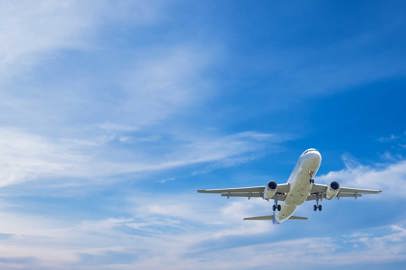25 October 2018
IATA
8.2 billion Air Travelers in 2037
The International Air Transport Association (IATA) revealed that present trends in air transport suggest passenger numbers could double to 8.2 billion in 2037.
The latest update to IATA’s “20-Year Air Passenger Forecast“, shows that an increasing shift Eastwards in the center of gravity of the industry is behind the continued strong growth. Over the next two decades, the forecast anticipates a 3.5% compound annual growth rate (CAGR), leading to a doubling in passenger numbers from today’s levels.
The Association warned, however, that growth prospects for air transport, and the economic benefits driven by aviation, could be curtailed if protectionist measures are implemented by governments.

© Sisterscom.com, Shutterstock
"Aviation is growing, and that is generating huge benefits for the world.
A doubling of air passengers in the next 20 years could support 100 million jobs globally.
There are two important things that stand out about this year’s forecast.
Firstly, we are seeing a geographical reshuffling of world air traffic to the East.
And secondly, we foresee a significant negative impact on the growth and benefits of aviation if tough and restrictive protectionist measures are implemented," said Alexandre de Juniac, IATA’s Director General and CEO.
Eastward shift in aviation’s center of gravity continues

Source: IATA/TE
The Asia-Pacific region will drive the biggest growth with more than half the total number of new passengers over the next 20 years coming from these markets.
Growth in this market is being driven by a combination of continued robust economic growth, improvements in household incomes and favorable population and demographic profiles.
China will displace the United States as the world’s largest aviation market (defined as traffic to, from and within the country) in the mid-2020s. The rebalancing of China’s economy towards consumption will support strong passenger demand over the long term.
- India will take 3rd place after the US, surpassing the UK around 2024.
- Indonesia is forecast to be a standout performer - climbing from the world’s 10th largest aviation market in 2017 to the 4th largest by 2030.
- Thailand is expected to enter the top 10 markets in 2030, replacing Italy which drops out of the ranking.
Globalization Reversed or Liberalization Increased?
The 3.5% CAGR to 2037 assumes an unchanged policy framework over that period. Policy shifts, however, are likely over time. Should protectionism continue to expand in a "reverse globalization" scenario, aviation would continue to grow, but at a slower pace and deliver fewer economic and social benefits. Under a liberalized environment connectivity would generate significantly more jobs and GDP growth.
"Global prosperity depends on air connectivity. Aviation is sensitive to policies that either support or undermine growth. And these seem to be pointing in the wrong direction. Dampening demand for air connectivity risks high quality jobs, and economic activity dependent on global mobility. This forecast is a cautionary warning to governments. First, the industry will grow but they must clear the infrastructure bottlenecks to bring that growth to their home markets. And secondly, governments must understand that globalization has made our world more socially and economically prosperous. Inhibiting globalization with protectionism will see opportunities lost," said de Juniac.
| Scenario | CAGR |
Total Pax in 2037
Origin-Destination (O-D) passengers
|
Jobs Supported
in 2037
|
GDP Supported
in 2037
(2016 prices)
|
|---|---|---|---|---|
| Reverse Globalization | 2.4% | 5.7 billion | 90 million | $4.6 trillion |
| Constant Policy | 3.5% | 7.0 billion | 100 million | $5.5 trillion |
| Maximum Liberalization | 5.5% | 10.3 billion | 119 million | $7.6 trillion |
Source: IATA/Tourism Economics & Oxford Economics

Infrastructure and sustainability
No matter which growth scenario comes to pass, aviation faces an infrastructure crisis. Governments must work closely with the industry, to be more ambitious in developing efficient infrastructure, fit for purpose, and offering value for money.
"The world stands to benefit greatly from better connectivity. However, at this rate, airports and air traffic control will not be able to handle demand. Governments and infrastructure operators must strategically plan for the future. Decisions made now will have an impact on the value created by aviation for their regions," said de Juniac.
The increased demand to fly creates a responsibility to expand in a sustainable manner. The aviation industry remains committed to its goals of carbon-neutral growth from 2020 onwards and cutting CO2 emissions to half 2005 levels by 2050. "Commercial aviation is one of the only global industries to take on such comprehensive environmental targets. With mandatory emissions reporting beginning on 1 January 2019 under the Carbon Offsetting and Reduction Scheme for International Aviation (CORSIA), this will help rally the industry to invest in more fuel efficient aircraft and sustainable aviation fuels," said de Juniac.
Key facts
Fastest growing aviation markets in terms of annual additional O-D passengers from 2017 to 2037 (constant policies scenario):
- China: 1 billion new passengers for a total of 1.6 billion
- US: 481 million new passengers for a total of 1.3 billion
- India: 414 million new passengers for a total of 572 million
- Indonesia: 282 million new passengers for a total of 411 million
- Thailand: 116 million new passengers for a total of 214 million
Regional growth (‘constant policies’ scenario) in 2037
- Routes to, from and within Asia-Pacific will see an extra 2.35 billion annual passengers by 2037, for a total market size of 3.9 billion passengers. Its CAGR of 4.8% is the highest, followed by Africa and the Middle East.
- The North American region will grow by a CAGR of 2.4% annually and in 2037 will carry a total of 1.4 billion passengers, an additional 527 million passengers.
- Europe will grow at a CAGR of 2.0%, and will see an additional 611 million passengers. The total market will be 1.9 billion passengers.
- Latin American markets will grow by a CAGR of 3.6%, serving a total of 731 million passengers, an additional 371 million passengers annually compared to today.
- The Middle East will grow strongly with a CAGR of 4.4% and will see an extra 290 million passengers on routes to, from and within the region by 2037. The total market size will be 501 million passengers.
- Africa will grow by a CAGR of 4.6%. By 2037 it will see an extra 199 million passengers for a total market of 334 million passengers.
IATA (International Air Transport Association) represents some 290 airlines comprising 82% of global air traffic.
Testo a cura di Alisè Vitri
Foto: Sisterscom.com, Shutterstock
Visual: Lars Nissen Photoart/Pixabay
Fonte e infografiche: IATA Corporate Communications
Copyright © Sisterscom.com
You might be interested in
Useful Info

Authority
Olbia Airport will be named after Prince Karim Aga Khan IV
ENAC pays tribute to the founder of modern tourism in Costa Smeralda: a key figure in the history of aviation and the development of Sardinia
Useful Info

Authority
Airport Day
The national event, organized by Assaeroporti, is held on February 5 to celebrate the strategic role of the 17 participating Italian airports
Useful Info

Authority
ENAC: reorganization and future challenges of air transport
At the 2025 Meeting, a discussion on innovation, sustainability, innovative air mobility and quality of services, in line with the country's strategic objectives

